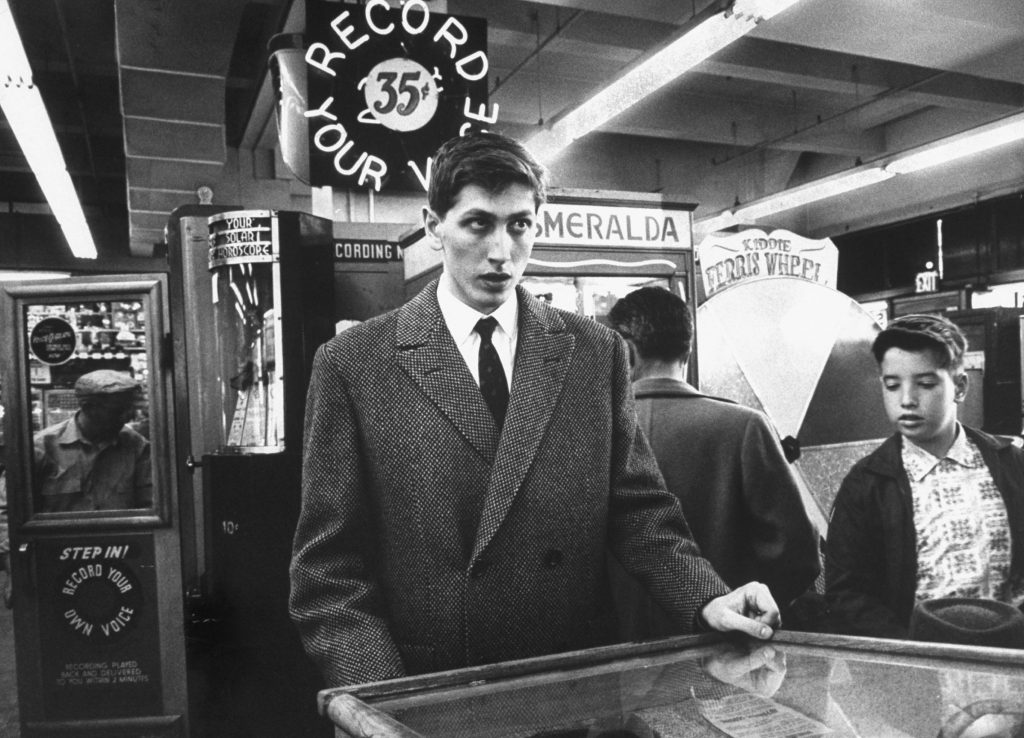Boys are thrilled and afraid as they ride an elevator for the first time. A woman worries as her astronaut husband soars through space. A man—Bob Hope—is letting an audience know he about to try his hardest to make them laugh.
Here, LIFE.com pulls from its archives a series of expressions—from people and, in a few cases, animals—that are both wordless and deeply rich. It’s a reminder that while communications by computer or phone call are certainly convenient, there is no quicker way to understand what a person is feeling than by looking them in the eye.

Bob Hope, 1941
Peter Stackpole Time & Life Pictures/Shutterstock

Donald the dog-loving duck plays with his (seemingly embarrassed) friend, Trigger, a Chesapeake Bay Retriever, 1949.
Loomis Dean Time & Life Pictures/Shutterstock

Mrs. Leland S. McCleery watches her Michigan Wolverines lose to the Wisconsin Badgers, 1959.
Paul Schutzer Time & Life Pictures/Shutterstock

An intensely concerned Dr. Ernest Ceriani holds a bandage on the eye of a young girl whose head he has just stitched up after she was kicked by a horse, Colorado, 1948.
W. Eugene Smith Time & Life Pictures/Shutterstock

A frightened 15-year-old German Luftwaffe anti-aircraft crew member weeps after being taken prisoner by American forces during the drive into Germany in 1945.
John Florea Time & Life Pictures/Shutterstock

A serene Marilyn Monroe on the patio outside of her Los Angeles home, 1953.
Alfred Eisenstaedt Time & Life Pictures/Shutterstock

Child star Margaret O’Brien, 1945
Bob Landry Time & Life Pictures/Shutterstock

Rene Carpenter, the wife of NASA astronaut Scott Carpenter, watches his orbital flight on TV in 1962.
Ralph Morse Time & Life Pictures/Shutterstock

Yorkshire hogs appear to smirk as they share the shade on a hot summer day in 1951.
Wallace Kirkland Time & Life Pictures/Shutterstock

Sophia Loren, 1957.
Loomis Dean Time & Life Pictures/Shutterstock

A kitten emerges, undaunted, from a pot of milk, 1940.
Nina Leen Time & Life Pictures/Shutterstock

A less-than-happy Amer4ican taxpayer at an IRA information center in New York City, 1944
Alfred Eisenstaedt Time & Life Pictures/Shutterstock

Dazed U.S. Army Corporal Roy Day Jr., photographed after surviving a massacre by North Korean troops of 26 of his American fellow-prisoners. Day played dead after all of the prisoners were shot and left on a hillside in Korean, 1950.
Hank Walker Time & Life Pictures/Shutterstock

Actress Jeanne Moreau weeps in a scene from the film, Five Branded Women, 1960.
Gjon Mili Time & Life Pictures/Shutterstock

Two boys hold their breath, amazed, on their first elevator ride, 1948.
Allan Grant Time & Life Pictures/Shutterstock

Gen. Douglas MacArthur roars orders from the bridge of the flagship USS Mount McKinley during an assault on the Inchon beachheads during the Korean War, 1950.
Carl Mydans Time & Life Pictures/Shutterstock

Winston Churchill, inscrutable during an election campaign, 1951.Winston Churchill, 1951
Alfred Eisenstaedt Time & Life Pictures/Shutterstock

A tough sergeant bawls orders from the corner of his mouth, 1952.
Cornell Capa Time & Life Pictures/Shutterstock

A mother nurses her child, Israel, 1960.
Paul Schutzer Time & Life Pictures/Shutterstock

Shirley MacLaine and her daughter Sachi Parker playfully pout, 1959.
Allan Grant Time & Life Pictures/Shutterstock

Pediatrician Dr. Ralph Shugart confers with a worried mother of a baby that has been crying for hours, 1963. He decided to give them both a sedative.
Leonard McCombe Time & Life Pictures/Shutterstock

A woman laughs uproariously as she undergoes a “head-tapping session,” part of a sensory awareness class in an encounter group at the Esalen Institute in 1970.
Arthur Schatz Time & Life Pictures/Shutterstock

A jubilant Ronald Reagan celebrates victory during California’s gubernatorial primary, 1966.
John Loengard Time & Life Pictures/Shutterstock

Comedian Ed Wynn looks horrified at the idea of killing worms in the Broadway show, Hooray for What!
Peter Stackpole Time & Life Pictures/Shutterstock

A North Korean soldier contemptuously sticks out his tongue at LIFE photographer Joe Scherschel on the second day of cease-fire talks during the Korean War, 1951.
Joseph Scherschel Time & Life Pictures/Shutterstock



















































































































